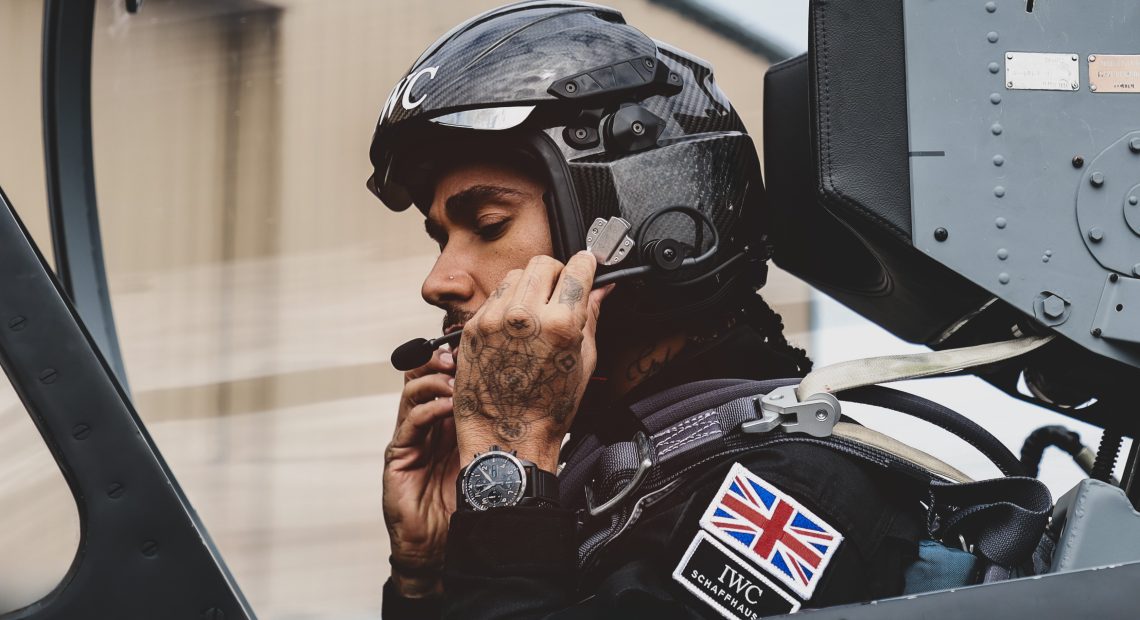Lewis Hamilton experiences a commercial spaceflight training flight in Austin, Texas

Supported by IWC Schaffhausen
Lewis Hamilton, the Mercedes-AMG Petronas F 1 Team driver, has begun his quest to be a commercial human spaceflight mission member after years of dominating the Formula 1 circuit.
With the support of Swiss watchmaker IWC Schaffhausen, of which he has been a brand ambassador since 2013, his dream of going into space is becoming a reality.
On November 26, 2024, he undertook astronaut flight training in an L-39 Albatros jet in Austin, Texas. Lewis underwent the same training as the crews of the Inspiration 4 and Polaris Dawn commercial human spaceflight missions.
IWC Schaffhausen supports the Polaris Dawn mission, which is part of the Polaris Programme. The mission, which seeks to enhance human space exploration capabilities, was launched from Kennedy Space Centre on September 10, 2024, and concluded on September 15, 2024, with a safe return to Earth. The Polaris Dawn crew achieved a historic milestone during the mission by performing the first commercial spacewalk. Lewis hopes to join a future Polaris commercial spaceflight mission.
Watch the video here:
Lewis’ training in the L-39 Albatros aircraft included accelerations and decelerations simulating the intense forces astronauts experience during a rocket ascent. Hamilton also experienced zero gravity by flying a parabolic manoeuvre, briefly feeling weightless. The F1 star endured a maximum of 7.5 G, surpassing the forces astronauts face on ascent, demonstrating his resilience and determination.
During the intense training, Hamilton was joined by children from Dibia Dream, a social STEM education programme, as a reminder that hard work, focus, and dedication can help anyone achieve great things. The young onlookers were inspired by Hamilton’s incredible rise from his early days in karting to becoming one of motorsport’s most acclaimed figures.
Reflecting on the differences between piloting an aircraft and racing in Formula 1, Hamilton said: “It is very different to F1; the blood never leaves your head. When you are turning the plane, you feel the blood leaving your body, your chest gets heavy, and it is hard to breathe.”

Lewis, who joins Ferrari in 2025, wore a special race suit with a ‘space mission’ patch and his iconic number 44 in tribute to his space mission training journey. This suit will debut at the 2024 Qatar Grand Prix (November 29-December 1) at the Lusail International Circuit.
Spaceflight training involves rigorous physical, technical, and psychological preparation. Astronauts undergo physical conditioning to withstand the harsh environment of space, such as microgravity and intense g-forces during launch and re-entry.
This includes exercises to enhance strength, endurance, and cardiovascular health. They also train in simulators to familiarise themselves with spacecraft systems and emergency procedures.
Astronauts learn to operate spacecraft controls, conduct scientific experiments, and handle spacewalking tasks. Psychological training helps them adapt to isolation and stress. Additionally, they participate in survival training for emergency scenarios on Earth.
Hero image: Lewis Hamilton enters the L-39 Albatros jet in Austin, Texas, on November 2, 2024. Credit: IWC Schaffhausen
Last Updated on 4 months by Arnold Pinto













